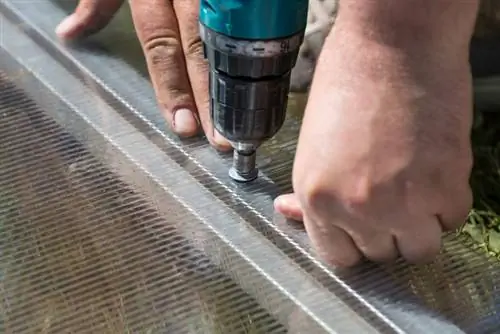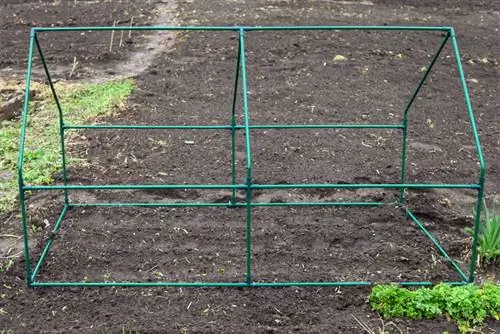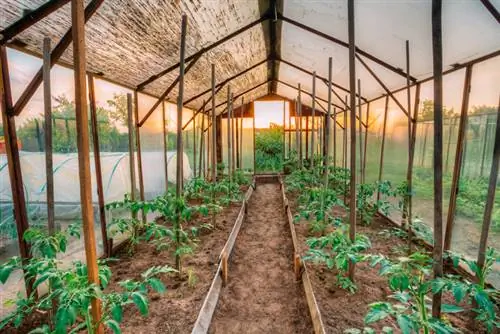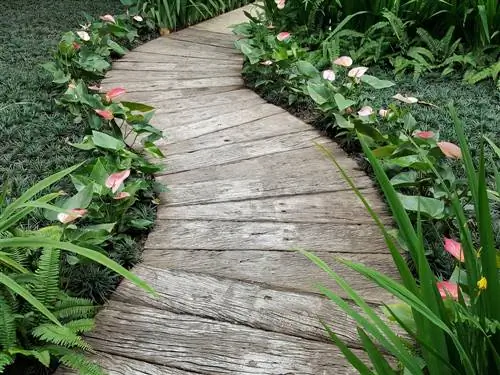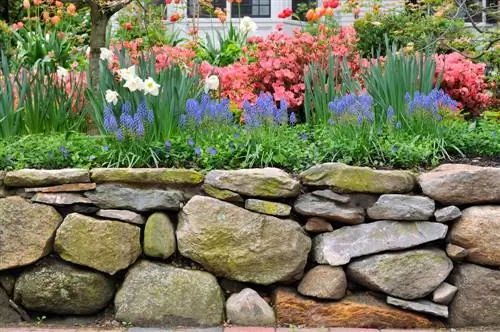- Author admin [email protected].
- Public 2023-12-16 16:46.
- Last modified 2025-01-23 11:19.
It is often a question of money which material is used in greenhouse construction. Our greenhouse tips are intended to briefly convey the positive properties and disadvantages of common building materials. When choosing, pay particular attention to durability and easy processing.
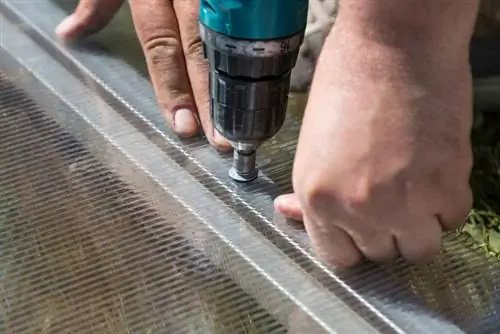
Which materials are suitable for greenhouse construction?
When choosing materials for a greenhouse, durability and ease of processing are crucial. Commonly used materials are wood, plastics, aluminum, glass, plastic panels and foil. Each material has its own advantages and disadvantages in terms of resistance, insulation, light transmission, maintenance and price.
Questions that usually arise right at the start of planning often relate to the different building materials that can be used for a greenhouse. Let's start with the external scaffolding, i.e. the frame that is particularly affected by the weather over time. Regardless of whether we built it ourselves or bought it ready-made, we differentiate betweenthree basic versions, which depend a little on personal taste, a little more on the costs and a lot on the later maintenance effort and the life expectancy of a greenhouse have to do.
- Wood: The ultimate classic, even when building greenhouses. Humidity and rain, which should be taken into account, play a major role in terms of resistance. However, wood scores points with its pleasant naturalness. Agood choice is larch or cedar wood The inexpensive domestic softwoods such as spruce and pine should be carefully impregnated before processing.
- Plastics: They are durable and almost indestructible, provide excellent insulation for the interior of the greenhouse and are easy to maintain. Heavy roof constructions may cause the material to warp. Therefore, choose a sensible material thickness, especially if a prefabricated kit is being set up.
- Aluminium: The lightweight metal frames are quick to assemble (alone), hardly wear out and require almost no maintenance due to their robustness. The insulating properties are less good, as both cold and heat are let through immediately.
- Glass: Clear visibility for good visibility, but also the high transmittance of light and UV radiation are the biggest advantages of this traditional greenhouse roofing. This is offset bya relatively high price and the difficult processing when cutting. Preferably, impact- and shock-resistant toughened safety glass should be used, which is three millimeters or more thick.
- Plastic panels: The hollow-wall panels, which are usually made of polycarbonate, are characterized by their lightness, are translucent and sufficiently impact-resistant if there is a little heavy hail. Cheaper but also robust: panels made of PVC, which, however, have poor light transmission values. Acrylic glass has the longest lifespan of all plastics, remains clear for decades, but tends to splinter quickly.
- Film: Not recommended for professional greenhouse constructions, as the stability is not sufficient in the long term, even with multi-layered types. They are mainly used for short-term cultivation, on cold frames or in small houses. Their big plus: They are extremely easy to process and, above all, inexpensive.
Tip
Don't just grab just any film, but if possible choose a mesh film that is only slightly more expensive (€80.00 on Amazon), which is not only much more stable, but also offers the plants better thermal protection and that inevitably better drains any condensation that forms on the interior surfaces.

